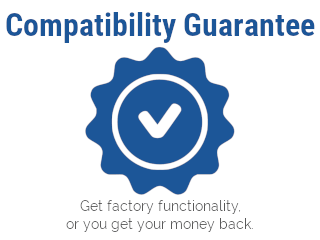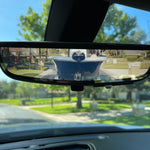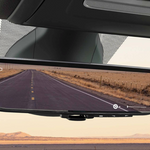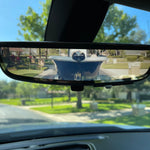Teaching your teen to drive when you're not around.
What is Teen Driver Monitoring?
Learning to drive for teens— or anybody else learning to drive, really comes down to an on-the-job training program. The driving "instructor" mentors more than teaches, while the driver learns to drive.
The instructor continually corrects and coaches the driver through various real-life driving situations. During that supervised period of driving, inexperienced drivers have very low rates of accidents and risky driving behavior.
The problem occurs once the teen begins driving independently. In fact, research shows the highest increase in crash rates among drivers 16-17 the first few months of independent driving.
Why does that increase happen?
The answer becomes evident when considering that the new driver no longer has their instructor providing mentoring in real-time. Now the teen driver must control the vehicle while also making decisions with limited experience.
One parent interviewed for a study on reducing risky driving behavior by teens, summed up the problem perfectly,
“They’re overconfident about their ability, once they get their license they think that it’s an entitlement – ‘I have a license so I know how to drive.’”
Teens' behaviors and attitudes change when operating vehicles without a parent present. Surveys of teen-drivers indicate as such:
“[I] definitely [drive differently]… [I] go probably about what the speed limit says when my parents are in the car, the radio is normally off, two hands on the wheel, always looking around but when I’m on my own I’ve got the radio on just relaxing.”
With a teen fully licensed, how can a parent be there without being there?
Teen driver monitoring records various driving metrics such as; speed, hard braking, excessive speed in turns or curves and location.
In addition to monitoring vital driving stats, certain monitoring methods can prevent use of cell phones, control radio volume and even limit maximum speed.
Teen driver monitoring allows parents to continue coaching new drivers to help prevent risky behavior and avoid vehicle crashes. By reviewing driving records with teens, parents can know what behaviors need addressing, or determine whether their teen's driving habits are too dangerous to even allow independent driving.
With the knowledge from a teen driving monitor, the course of correction can be up to parents— before law enforcement or your insurance makes the corrective action for you.
Driver monitoring has been widely implemented in commercial vehicles for years. Until recently the equipment and technology was cost prohibitive and not generally available to the general public.
The advancement of technology now provides parents the ability to monitor their teen's driving behavior. These monitoring technologies come in different forms— from applications built into your vehicle's infotainment system to cell phone apps to full-blown gps systems requiring installation of specialized equipment.
Some systems provide real-time data, while others require the downloading of data after the trip. The Ford system for example requires a separate physical key that's easily programmed in minutes from the ignition.
Which system fits any one driver's situtaion will depend on budget, available hardware and level of input parents desire when driving.
Whatever monitoring solution a parent might select, one fact remains true, monitoring teen drivers reduces their risky driving behavior and chances of being involved in a crash.
Why go through the effort to monitor teen driving?
Monitoring reduces risky driving behavior. Reducing risky driving behavior reduces the chances of speeding fines and crashes.
For most parents, simply having their teen return home after any unaccompanied trip would justify monitoring.
Statistically, teen drivers within 6 months of full licensure represent the most dangerous driving segment. The crash rate per mile driven for newly licensed drivers aged 16 years is twice that of drivers aged 18 to 19 years.
Add a passenger other than a parent, and a teen driver's chances of an accident increases by 250%. Add a second non-parent passenger and the risk increases to 3 times more than when the teen drives alone or with a parent.
If the passenger or driver happens to be male, the risk increases even more.
So how does monitoring help reduce risk? To understand, start with the reasons teen drivers engage in risky driving behavior in the first place.
Teen driver crashes statistics indicate that the individual behaviors most often associated with fatal crashes included speeding, not using a seat and driving under the influence of alcohol (Brovold, Ward, Donath, Simon, Shankwitz, & Creaser 2007).
While these behaviors have been identified due to their ability to be measured, distracted driving, which can't be proven as readily, would be a key factor in what precipitated the crash.
Among drivers 15 to 19 years old involved in fatal accidents, 8% included distraction as a cause. This age group possesses largest proportion of drivers who were distracted at the time of the fatal crashes (National Center for Statistics and Analysis. (2020, April). Distracted driving 2018 (Research Note. Report No. DOT HS 812 926). National Highway Traffic Safety Administration).
All these behaviors center around the teen driver exercising poor judgement. More specifically stated, these behaviors demonstrate a lack of how to manage risk while driving.
Too often, teen drivers believe that the license itself makes them a 'good' driver. Experienced motorists understand the effects of weather, road conditions and the habits of other drivers in assessing potential risks while driving.
New teen drivers lack the experience and knowledge in many risky driving situations to implement safer driving techniques.
The National Highway Traffic Safety Administration (NHTSA) has identified important aspects of risk management that all drivers should incorporate into their driving habits.
Practicing risk management as a driver requires the driver to understand their own personal limitations as a driver. For teen drivers, understanding their limitations as a driver presents a particularly difficult challenge to safer driving.
While gaining a drivers license gives teens a greater sense of freedom, they often fail to realize that new freedom comes with 3 important limitations. Understanding limitations allows any driver to make safer decisions when behind the wheel.
The American Driver and Traffic Safety Education Association, identified limitations of all drivers.
-
Decisions are limited by a driver’s capabilities
Drivers, lacking in driving knowledge, skills, and self-confidence, are limited in their ability to make safe driver decisions.
-
Decisions are limited by the environment
Safe drivers are aware of and use environmental information to make safe driving decisions. They observe a traffic control sign, derive information from it, and use that information in executing a safe driving decision.
-
Decisions are limited by what a driver is willing to do
Safe driving is contingent upon drivers practicing safe driving habits and using effective decision-making strategies.
Any experience in dealing with teens helps anyone understand why teens present a higher level of risk when behind the wheel of a vehicle in all 3 areas.
Independent teen drivers by default have very little driving experience. As stated earlier, teens tend to act on their new license as an end-all to their driving knowledge. In reality those teens know the least compared to the overwhelming majority of others with which they share the road.
According to data from a study involving parents of teen drivers, environmental limitations cause the most worry for parents of teens who drive. Parents worry that their teen driver doesn't realize how much wet roads or night conditions change how drivers must address driving.
Those worries are well-founded, because teens don't have much experience driving in suboptimal conditions.
Does the teen driver realize how much more dangerous driving an SUV on a wet or icy road becomes in that situation? Do they understand the need for greater stopping distance or the higher risk of rollover if they are forced to swerve under those conditions?
Ultimately, drivers more willing to commit to safe driving behavior become less limited in their judgement. Teen's attitudes towards driving laws tend to be very lax as demonstrated in quotes from actual teen drivers in a recent study in Minnesota,
“I don’t think it really matters about five [mph] over, I think most people do five over anyway, that would be really annoying if it beeped just for going five over because there are some places where it's really annoying to go the actual speed limit.”
“If someone’s speeding out of control... it's bad.... As long as you’re in control it should be fine and slower people should move to the right.”
Clearly, many teens have no understanding of their personal limitations as a driver.
Monitoring allows parents to review and mentor their teen's driving over time, so as to develop safer driving habits.
And that's why teen driver monitoring works in developing safer teen drivers.
Multiple studies have demonstrated the effectiveness of monitoring in reducing risky driving behavior by teen drivers.
Parents do need to understand that driver monitoring comes in different forms—each with their own strengths, weaknesses and varying levels of efficacy.
Teen driver monitoring systems fall in 3 generally accepted categories; Monitoring with Immediate Direct Feedback for Driver, Monitoring with Feedback and Real-Time Parental Notification and Recorded Monitoring.
-
Monitoring with Immediate Direct Feedback for the Driver
This method provides feedback directly to the driver in real-time. Via various alerts, similar to the fasten seatbelt sign, drivers are alerted to risky driving behavior. The system continues to provide warnings until the behavior is corrected.
Some systems come equipped with the ability to govern speed. This capability will require specialized hardware installation in most cases.
Of the 3 choices generated the highest approval from teen drivers.
-
Monitoring with Feedback and Real-Time Parental Notification
This method usually provides feedback directly to the driver in real-time, but will also notify parents when the teen driver consistently engages in risky driving behavior. Parental notification occurs via text message.
In addition to alerts related to speed or unsafe driving, some systems will send notifications in cases of phone use while driving, high radio volume and/or specific geographic location.
Parents prefer this methodology over other options.
-
Recorded Monitoring
Of all the ways to monitor a teen driver, recorded monitoring may be the easiest to implement. Depending on vehicle year, make and model, teen monitoring may already be available via factory infotainment system.
Vehicles without factory apps don't prevent driver monitoring. Smartphone and internet technology now makes monitoring as easy as downloading an app. Many states have made teen driver monitoring apps available free to residents
Of all the methods, monitoring with real-time feedback generated the best results in terms of reducing risky driving behavior. That fact doesn't mean the other methods didn't prove to be effective.
To the contrary, all methods of teen driver monitoring helped to reduce risky driving behavior among teens. The biggest factor that increased the impact of monitoring in studies proved to be parental involvement in coaching teen drivers.
In cases where parents reviewed driving behavior with teen drivers on a regular basis— irrespective of the monitoring method — reductions in risky driving behavior were greater.
That's why it's so important to be there when you can't be there.
So what things should be monitored?
Most parents will have their own ideas on what needs monitoring. In most cases they would be correct. Yet, if they're selecting an app or service for teen driver monitoring, it will be important to get the best features to get the most value.
Of course parents will want to monitor speed and cell phone use. They shouldn't ignore other very important measurements such as acceleration, g-force, cornering, geographic location and curfew. If not already accessible, an app with roadside assistance can also be beneficial.
The motivation for monitoring acceleration and cornering needs no motivation. Why record something like excessive g-forces? In a word, curves. Teen drivers have high rates of crashes in curves.
Don't feel pressured to get too technical. Monitoring on the most basic levels when coupled with parental mentoring achieves the same goal. Start with the simplest solution first. If a particular teen requires a greater level of monitoring, the need will become evident quickly.
Ready for Teen Driver Monitoring?
Interested in teen driver monitoring? Click here to get information about specific teen driving apps .
![banner right]()
![banner right]()














